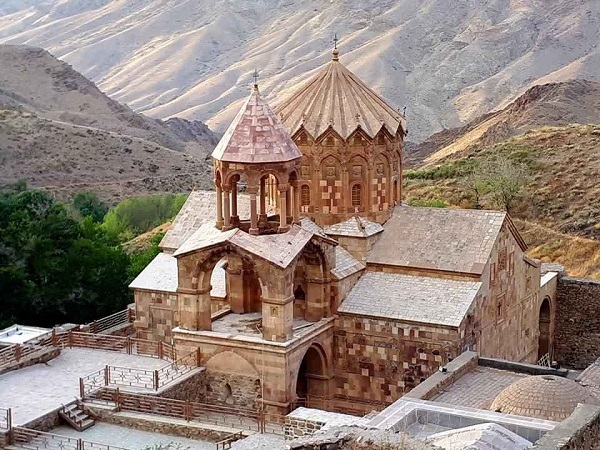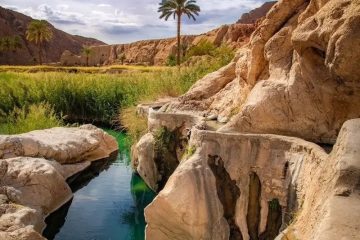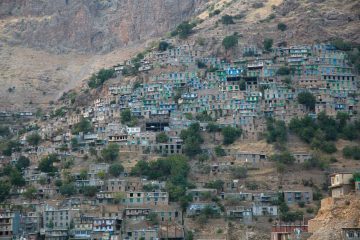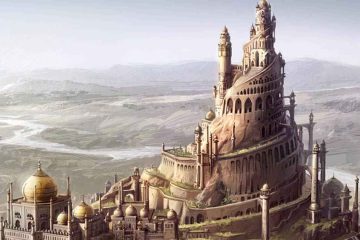More Landscapes, More Culture
9 days/ 8 nights
“More Landscapes, More Culture” is an ideal trip to discover Azerbaijani culture, Orthodox churches, bazaars on the Silk Road and the Jewish holiday Purim. This tour, in addition to the breathtaking landscapes, offers us the opportunity to discover places of worship and the world’s quintessential bazaar called the Bazaar of Tabriz, visited by famous explorers of the Silk Road, including the great Venetian traveler Marco Polo. Tabriz is located in the northwestern part of Iran, East Azerbaijan. This fascinating city, nestled on the slopes of Mount Sahand, reveals itself to the visitor by its exuberant nature and rich Azerbaijani style architecture. This style defines, from the very first moment, an anthropological divergence due to the fact that the ancient Azeri language is mostly spoken in the region of Iranian Azerbaijan.
“More Landscapes, More Culture” is a dive into the history of Persia through the sites of great historical importance such as Takht-e Soleiman, Bisotun, Bazaar of Tabriz, Mausoleum of Avicenna and traditional houses of Sanandaj where enrich our cultural background of Kurdish people. Iran hides great treasures that are only discoverable by visiting the beautiful architecture of Seljuk era in Azerbaijani cities. The surprise of the trip will be Kurdish Village of Palangan whose people have a great skill in building houses. The journey continues to Hamedan where we will have the opportunity to learn about the history of the Medes in Ecbatana and visit the Tomb of Esther and Mordechai. The multi-ethnic character of Iran is highlighted through these cities.
“More Landscapes, More Culture” is a journey through the northwest of the country to the Kurdistan where the popularity, the elegance of nature and the hospitality of its inhabitants will satisfy even the most demanding.
| DEPARTURE/RETURN LOCATION | IKA International Airport | ||||
| DEPARTURE TIME | Please arrive at least 3 hours before the flight. | ||||
| INCLUDED |
| ||||
| NOT INCLUDED |
|
1° Day; Country of origin - Tabriz
Departure by scheduled flight to Tabriz, the capital of the Azerbaijan region of Iran. Welcome and greetings by SITO TRAVEL’s tour guide at the airport. Transfer to hotel and check-in.
2° Day; Tabriz - Saint Thaddeus Monastery - Saint Stepanos Monastery - Tabriz
Tourists often travel to Iran not only in order to visit Persepolis, but also the monuments of Islamic culture, the splendor of mosques of the Islamic period and, in general, something that is somehow related to the rituals of Islam. All this, of course, is understandable, but we should not overlook the presence of religious minorities and especially the places of worship where they practice their faith. To give an example, we should know that in northwestern Iran there are several ancient churches recognized by UNESCO as World Heritage Sites. In Iran, the limited population of Catholics is divided into three different rites: Assyrian-Chaldean, Armenian and Latin, and five dioceses. Out of the Iranian population; 98.79% are mainly Shiites (including 5-10% Sunnis), 0.37% Christians and 0.84% others (including Zoroastrians and Jews). The criterion that makes this religious mixture fascinating is the arrival of religions in Iran, the spread of faith and the construction of places of worship, which are found in different areas depending on the presence of the related communities. For example, in the central and southeastern area there are Zoroastrian fire temples, while in the northeast and in Isfahan there are Catholic churches and in the western part of Iran, there is the Tomb of Esther and Mordechai, the place of worship par excellence of Judaism.
- The day is devoted to the visit of the beautiful Thaddeus Monastery (Kara Kelisa), also called Black Church, the name is due to the color of the stones used in the construction of the church. In Azeri language, “kara” means black. St. Thaddeus Church is one of the oldest and most remarkable monuments belonging to Christianity that has remained till today. Its great importance for the Armenian Orthodox community of the country comes from the claim that the church is considered to be the first in the world which was built in 68 AD by one of Jesus’ apostles, St. Thaddeus, who came to Iran with the aim of preaching the teachings of Christ. The church consists of two parts: a black structure, the original church building from which it takes its name, and a white structure, the main church that was added to the west wing of the building in 1810.
- We continue the journey to the other amazing place of worship: Saint Stepanos Monastery, an Armenian cathedral dating back to the 9th century AD. The church is located in a mountainous area where the Aras River meanders in the valley of the Iranian border very close to the Nakhchivan Autonomous Republic. In fact, the monastery is located in the middle of the lush nature of the border area and is a synthesis of Iranian and Byzantine architecture which later became known for the peculiar style of typical Armenian architecture. Its octagonal bell tower has a salmon-pink color (orange-pink) due to the rocks of the surrounding mountains. As the monastery has a wooden and metal gate, a fortified enclosure, and a series of towers by which the night watch was carried out, it resembles a fortress from afar. Next to the prayer hall there is a cloister where there are many rooms to accommodate the seminarians who spent part of their lives following the courses of the monastery’s religious school. This area has been a transit route for merchants, armies and devotees.
Return to Tabriz. Dinner and overnight at the hotel.
3° Day; Tabriz - Kandovan
The region of Iranian Azerbaijan occupies a small territory compared to the total area of Iran. Azerbaijan region was a kind of international agora, which observed all the geopolitical movements of the Safavid and Ottoman empires, as well as the arrival of Christian evangelists for the propagation of Christianity. Tabriz has a fundamental role in the modern history of Iran as the initial phase of one of the Iranian Constitutional Revolution took place in this city.
After breakfast, visiting the capital of East Azerbaijan:
- Tabriz Archaeological Museum: where a repertoire of historical objects, mainly discovered in excavations in Azerbaijan, is displayed in three main halls. This collection tells us about the passage of Persian art from Iran to the West. One of the most interesting areas will obviously be that of ceramics and terracotta dating from the 12th and 13th centuries AD, when Persian calligraphy had an artistic influence on decoration of objects. In addition to the National Museum of Iran in Tehran, the Museum of Azerbaijan has the largest collection belonging to different periods of Persian history.
- Blue Mosque: built in 1465, by order of the ruler Jahanshah, an art lover and also a poet of the Turkmen dynasty Qara Qoyunlu. It was not only a mosque but a large complex containing a library, a dervish convent, a garden, baths and a mausoleum. Following an earthquake in the 18th century, today only a part of the mosque has remained standing thanks to the collaboration and restoration of archaeologists. The particular style of this mosque, very different from others, is known as the Azebaijani style which is even unusual in the Persian world, especially because it confirms an Ottoman influence in Tabriz. Among the photographers, attracted by this mosque, we could mention Luigi Montabone -Italian photographer- who photographed the mosque in 1862. Here is a description of Ella Maillart- Swiss traveler, writer and photographer- of this fascinating mosque: “This particular feeling when you are in love and you think you have never understood, until then, the splendor of the sky at midnight when stars, not equal no each other, shine with such brightness that they seem to come toward you. This extraordinary mosaic makes you dream of a corner where each star is a colorful flower.”
- Tabriz Bazaar: an exceptional complex that includes about 35 km of covered walkways, with more than 7000 shops, 24 caravanserais and 28 mosques. The main activity inside the bazaar was the manufacture of carpets, but it is also famous for its jewelry and goldsmiths, the sale of dried fruits, spices and the famous cheese of the region called Lighvan. The bazaar of Tabriz in Iran is a traditional bazaar and was the center of economic life where most of the activities of the inhabitants took place. Architecturally, the bazaar contained several buildings whose shape was adapted to the low winter temperature of Tabriz. The Tabriz bazaar is a shining example because it includes almost every conceivable example of a complex suitable for economic activities: stores, workshops, warehouses, trading houses, caravanserais, passages and intersections. In addition, the second section of the bazaar was devoted to places related to other socio-religious activities: mosques, Koranic schools, spaces dedicated to religious ceremonies, traditional Iranian gymnasium (Varzesh-e Pahlevani), tea houses and taverns. In short, this commercial labyrinth can make us lose hours and hours in its beauty where we will have a unique sensory experience. Just walking and taking a deep breath, you will be intoxicated by the aroma of freshly ground cinnamon, the wool of Saray-e Mozaffari carpets, fresh cheese and Barbari bread, the typical bread of the Azeris of Iran, freshly baked.
- Afternoon excursion to Kandovan Village, located in a wonderful valley of Mount Sahand with a picturesque panorama, famous for houses carved out of volcanic rock. Due to the conical shape and the type of excavations, the houses can be easily cooled or heated depending on the season.
Dinner at a restaurant and overnight stay at a traditional house.
4° Day; Kandovan - Takht-e Soleyman - Takab
We continue the journey to Takab. On the way, we will visit a magical place in Iran called Takht-e Soleyman. This archeological site of the Sassanid era is hidden among the picturesque mountains that accompany us during the trip and beautify the road. Takht-e Soleyman, in addition to its prestigious history, brings together a number of criteria to understand better the Zoroastrian culture and their place of worship. The refined beauty of Takht-e Soleyman where water and fire are reconciled surprises any visitor.
The archaeological site of Takht-e Soleyman, in northwestern Iran, is located in a valley surrounded by volcanic mountains of Zanjan Province. The site includes the main Zoroastrian shrine, partially reconstructed during the Ilkhanid period in the 13th century, as well as a temple dedicated to Anahita from the Sassanid period, 6th and 7th centuries. The architecture of the fire temple, as well as that of the kings’ assembly halls and other palaces, influenced significantly the architectural development during the Islamic period that took place after the dissolution of Sassanid rule in the 7th century AD. Takht-e Soleyman is also associated with beliefs much older than Zoroastrianism, as well as significant biblical figures and legends.
The site consists of an oval platform that rises about 60 m above the surrounding valley. It has a small artesian limestone well, which formed a lake 120 m deep. From there, small streams carry water to the surrounding land. The Sassanids occupied the site from the 5th century, building the royal sanctuary on a platform. The sanctuary was surrounded by a 13 meter high stone wall, 38 towers and two entrances to the north and south. The main building is the Zoroastrian fire temple or Azargoshnasb which is located on the northern shore of the lake. This temple, built of brick, has a square plan typical of Sassanid fire temples. This Sassanid architectural criterion became an exemplary model for the construction of other places of worship in the Islamic period.
Arrival in Takab. Dinner and overnight stay at the hotel
5° Day; Takab - Sanandaj
The origins of the Kurds can be traced back to an Indo-European people who settled in the region of Kurdistan. The Kurds are members of an ethnic and linguistic group living in Iraq, Syria, southeastern Anatolia, and the Zagros Mountains in western Iran. Most Kurds live in contiguous areas of Iran, Iraq and Turkey, a loosely defined geographic region called Kurdistan. Iran and Iraq each officially recognize these entities: the western Iranian province of Kurdistan and the Kurdish autonomous region in northern Iraq. The Kurdish language is an Indo-Iranian language close to Persian and Pashto. The Kurdish population is estimated at 25 to 39 million, including communities in Armenia, Georgia, Kazakhstan, Lebanon, Syria and Europe.
The nomadic lifestyle of the Kurds was mainly based on livestock and pastoralism on the plains of Mesopotamian and the hills of Turkey and Iran, although most Kurds practiced marginal agriculture as the mountainous area prevented to grow cereals and provided the opportunity to plant trees such as walnut and pomegranate. The enforcement of national borders since World War I has prevented seasonal migration of flocks, forcing the majority of the Kurdish population to abandon their traditional lifestyle and opt for sedentary life by engaging in herding and farming; while others engaged in non-traditional works
From an anthropological point of view, Kurdish culture is radically linked to their lifestyle in the mountains, i.e., the formation of societies and villages in the Zagros valleys, the typical Kurdish houses and the constant work in spring and summer to be able to fight the freezing cold in winter. In short, snow, cold and low temperatures define the basic criteria of the Kurdish ex-nomadic society. Kurdish culture, in addition to poetry, clothing, architecture and traditional festivals, preserves a kind of music still practiced by Kurdish families in Iran. It is interesting to know that in Iranian Kurdistan, there is a culture related to the production of pomegranate and during the harvest season, villages hold an annual festival in which women bring the first pomegranates on a copper tray and men attend the parade playing euphoric music with the typical Kurdish musical instrument, the sitar.
Arrival in Sanandaj, capital of the Iranian Kurdistan region. We will visit the Archaeological Museum of Kurdistan, Asef Mansion, Jameh Mosque and Bazaar of the historical center that reminds Naqsh-e Jahan Square in Isfahan. The visit of Sanandaj highlights the multi-ethnicity of Iran, as walking through the streets of the city, one can discover the tradition, facial features, language and traditional clothing of the Kurdish people. (In case of closure of museums or bazaar, the visits will be completed the next day before leaving Sanandaj).
Dinner and overnight stay at the hotel.
6° Day; Sanandaj - Palangan - Kermanshah
Departure to Kermanshah, on the way, we will visit the Kurdish Village Palangan, 120 km from Sanandaj. The peculiar style of this village on the rocky slopes, as in Masuleh, makes the roof of the lower house the courtyard of the upper house. The materials used in the construction of the houses are mostly stones in irregular shapes together with mud mortar and lime.
In most cold cities, the courtyards of the houses are located one and a half meters lower than the sidewalks, so that during the rainy season, running water from streams and rivers can enter the garden and water storage tanks.
To heat the interior space, which remains the biggest problem in the mountainous areas of Iran, a traditional method is used: Korsi. Under a table, they place a metal basin filled with charcoal burning without flame or smoke. The table is set with a very thick blanket called Lahaf Korsi covered by a mat, Ru Korsi, to protect it from food stains. Family members sit around the Korsi on large cushions pulling the blanket to cover the rest of their body. Due to the low height of the table, tea and snacks are served on the same table.
After visiting Kamyaran, we leave for Kermanshah:
Kermanshah Province is located on the strategic road that connecting Mesopotamia to the Iranian plateau. This road was militarily and commercially important, especially for the lapis lazuli and silk trade. In addition, the surrounding area is rich in prehistoric and historical sites such as Bisotun and Taq-e Bostan. Excavations carried out in the local caves has revealed the prehistoric human presence in this area. Bisotun was almost constantly occupied from prehistoric times until the accession of Darius I to the throne. These Neolithic testimonies precede the appearance of civilizations by different peoples. From the third millennium B.C., the Babylon-Ecbatana road, capital of the Medes in Hamadan, was used as a military route to invade the territory of the Medes by the Assyrians.
- Taq-e Bostan: After the fall of the Parthians, the Sassanids regained power by founding a new Persian empire: the Sassanid Empire. The name Sassanid identifies the dynasty, founded by Ardashir I, which ruled Persia between the Parthian rule and the Islamic conquest in 651 AD. The term Sassanid derives from Sasan, who was a priest of the temple of Anahita – the goddess of water – in Istakhr, a city in Fars, which was at that time a kingdom of the Parthian Empire. Babak, his son, governor of the city, taking advantage of the succession disputes between the pretenders to the throne of the empire at the beginning of the 3rd century, revolted and proclaimed himself king of Persia. Ardashir I, also known as Artaxerxes by Greek speakers, defeated the Parthian army and, consequently, the Sassanid Empire extended its colonies further and further by conquering the remaining Iranian and Mesopotamian provinces. Ardashir crowned himself at Ctesiphon in 226 AD and called himself Shahanshah (king of kings). Taq-e Bostan is the only place where one can learn more about the details of a bas-relief of the Sassanid period representing the succession of power with the presence of very relevant characters such as Mitra and Anahita. The largest bas-relief, under the largest arch, represents the royal hunting scene par excellence where hunting details abound as if it were an illustrated book.
Dinner and overnight stay at the hotel.
7° Day; Kermanshah - Bisotun - Hamadan
In the morning, departure to Hamadan. On the way, we will visit Bisotun, declared as a UNESCO World Heritage Site, whose fame is indebted to monumental inscription on a rock that was ordered by Darius I. Then, we continue to Kangavar to visit the Temple of Anahita (the goddess of water).
- Bisotun: is located on the ancient trade route that connects the Iranian plateau to Mesopotamia and has remains from the prehistoric to medieval period, Achaemenid, Sassanid and Ilkhanid. The main monument of this archaeological site is a bas-relief and a cuneiform inscription commissioned by Darius the Great when he ascended the throne of the Persian Empire in 521 B.C. This bas-relief represents Darius holding a bow, symbol of his sovereignty, and crushing the bust of a man lying on his back before him. According to the legends, this figure is Geomat, the magician of the temple, who claimed to be the king of the throne whose assassination allowed Darius to take power. Around the bas-relief, about 1,200 lines of inscriptions tell the story of Darius’s battles in 521-520 B.C., against the governors who tried to divide the empire founded by Cyrus the Great. The inscriptions are written in three languages: Old Persian, Elamite and Babylonian. The oldest, written in Elamite, narrates the legends about the king and the rebellions. It is followed by a Babylonian version of the same content. The last part of the inscription is particularly important, since it was when Darius first introduced the Old Persian. The inscription, being the only Achaemenid monumental inscription, has great importance as it documents a specific historical event: the re-establishment of the Persian Empire by Darius I the Great. It also testifies to the mutual influences in the development of monumental art and writing in the region of the Persian Empire. In Bisotun, there are also traces of the Mede period of the VIII-VII century BC.
- The historic center of Hamadan, from the urban design point of view, has a circular layout which, in some respects, has been directly inspired by Ecbatana. In fact, the Imam’s Square today has a fundamental role in meticulously explore the city and know about the changes undergone during a deep renovation in the last decades. Imam Square with its main streets (six in total) connects the central area with various neighborhoods and places of great social and religious importance, including the Great Bazaar of Hamadan, the Tomb of Esther and Mordechai and finally Avicenna Mausoleum, great Persian philosopher and physician Abu Ali Sina.
- Avicenna Mausoleum: He was born around 980 AD in Afshana, a village near Bukhara in Khorasan. His father, who had left Balkh a few years earlier, was a governor. A few years after his birth, the family moved to Bukhara. The capital was a very active cultural center that attracted the attention of scholars, including Avicenna. He did his early studies with the most prominent teachers of the time. Given the availability of teachers and libraries, his father’s high position in the Samanid administration, and his precociousness, at the age of eighteen, Avicenna was fully educated in the Greek sciences.
Avicenna began his professional career at the age of eighteen as a physician. After his father’s death, he was also assigned to an administrative position, perhaps as a district governor. He wrote “the Canon of Medicine” which was used as a reference book in many medical schools, including Montpellier until 1650. His writings were not limited to the field of medicine but also included music, metaphysics, chemistry, philosophy and rhetoric. Avicenna Mausoleum is a complex located in Avicenna Square that features a library, a small museum and a spindle-shaped tower inspired by Kavus Tower.
Dinner and overnight stay at the hotel.
8° Day; Hamedan - Tehran
The Medes, of Indo-European origin, settled on the Iranian plateau, the present Iran. At that time, there were many small principalities and different linguistic and ethnic groups: the Gutis, the Lullubis and the Kassites. Later, in the 8th century BC, the importance of the Medes increased considerably. Finally, in the seventh century, the whole of western region of Iran and some neighboring territories were attributed to the power of the Median Empire. The focal point of the Medes’ policy was undoubtedly the northwestern region, the center of which was the famous city of Ecbatana or Hamadan. The name of the capital of the Medes appears in the inscription of Darius I at Bisotun as Hegmataneh, and is transmitted by Herodotus and other authors as Ecbatana. When the Medes were subjugated to the Persians and welcomed into the new empire, they occupied important positions of power in such a way that they were indistinguishable from the Persians by the Greeks.
From the end of the 9th to the beginning of the 7th century B.C., the Media region was bounded by the Zagros Mountains in the west, the Garrin Mountains in Lorestan Province in the south, the Qaflankuh Mountains in Zanjan Province in the northwest, and the Dasht-e Kavir Desert in the east. Its neighbors were the kingdoms of Gizilbunda and Mannea to the northwest, and Ellipi and Elam to the south.
The morning begins with a visit to the ancient capital of the Medes:
- Ecbatana: according to Herodotus the ancient city of Ecbatana is an architectural complex built on a hill surrounded by seven circles of walls, one rising above the other. The battlements of these walls were painted in various colors and the roofs and columns were covered with silver and gold plates. It can be seen that in the sixth century BC, as proven by Achaemenid inscriptions, Median goldsmiths decorated the walls of the royal palaces of the imperial capital of Susa. However, Median art remains a matter of speculation. Apparently, this situation lasted until the royal palaces of Ecbatana were discovered and studied.
- Mausoleum of Esther and Mordechai: Hamadan is the guardian of one of the most important events of the Jewish people, Purim. In this city, we will have the opportunity to explore a historical event that took place during the reign of Xerxes, the king of the Achaemenids. In fact, the holiday of Purim is celebrated annually on the 14th day of the Jewish month of Adar. It commemorates the miraculous salvation of the Jewish people from the plot of the evil Haman, which was the holocaust of all the Jews in his kingdom. Esther, the wife of Xerxes, intervened on behalf of the people and denounced Haman’s plan to the king. The 14th of Adar was then chosen as the date for the celebration of Purim.
Arrival in Tehran. Dinner and overnight stay at the hotel.
9° Day; Tehran- Destination Country
Transfer to Imam Khomeini International Airport (IKA) departing Tehran to destination country.






Tour Reviews
There are no reviews yet.
Leave a Review